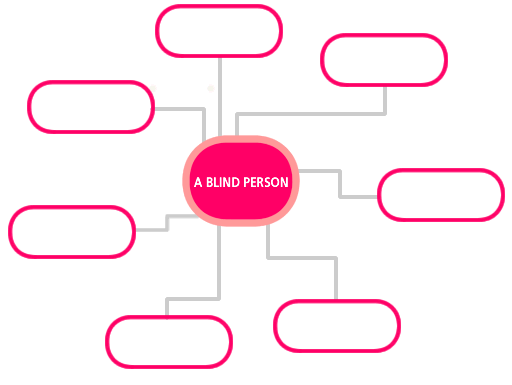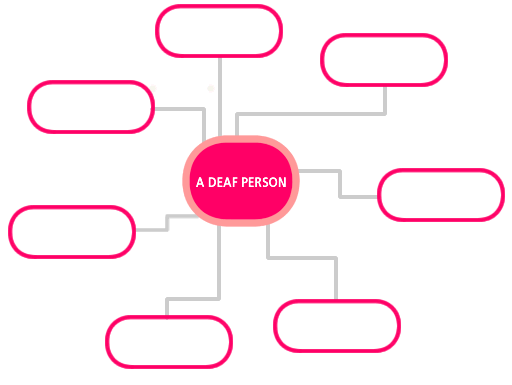

| STUDENT'S WORKSHEET | The Sensory Disabled | The Blind and the Deaf | |||||||||||||||||||||||||||||||||||||||||||||||||||||||||||||||||||||||||||||||||
| 2.3.2. The Blind and the Deaf | |||||||||||||||||||||||||||||||||||||||||||||||||||||||||||||||||||||||||||||||||
| Activity 1 | |||||||||||||||||||||||||||||||||||||||||||||||||||||||||||||||||||||||||||||||||
|
:: Read 2.1 The Blind | A) Basic Characteristics of the Blind and then complete the following cluster map with the basic characteristics of the blind. Of course, you may want to include other characteristics which are not in the text (write the linking words on the arrows). |
|||||||||||||||||||||||||||||||||||||||||||||||||||||||||||||||||||||||||||||||||
 |
|||||||||||||||||||||||||||||||||||||||||||||||||||||||||||||||||||||||||||||||||
| Activity 2 | |||||||||||||||||||||||||||||||||||||||||||||||||||||||||||||||||||||||||||||||||
|
:: Read 2.1 The Blind | B) Accessible Environments for the Blind.
|
|||||||||||||||||||||||||||||||||||||||||||||||||||||||||||||||||||||||||||||||||
| Activity 3 | |||||||||||||||||||||||||||||||||||||||||||||||||||||||||||||||||||||||||||||||||
|
:: The next chart shows a list of elements that should be adopted, adapted or avoided so that they do not represent a barrier for the blind. ::
Tick ( :: Write a cross (x) if the element is not at all suitable for a blind person. ::
Tick ( |
|||||||||||||||||||||||||||||||||||||||||||||||||||||||||||||||||||||||||||||||||
|
|||||||||||||||||||||||||||||||||||||||||||||||||||||||||||||||||||||||||||||||||
| Activity 4 | |||||||||||||||||||||||||||||||||||||||||||||||||||||||||||||||||||||||||||||||||
|
:: Read 2.2 The Deaf | A) Basic Characteristics of the Deaf and complete the following cluster map with the basic characteristics of the deaf. :: Of course, you may want to include other characteristics which are not in the text (write the linking words on the arrows). |
|||||||||||||||||||||||||||||||||||||||||||||||||||||||||||||||||||||||||||||||||
|
|
|||||||||||||||||||||||||||||||||||||||||||||||||||||||||||||||||||||||||||||||||
| Activity 5 | |||||||||||||||||||||||||||||||||||||||||||||||||||||||||||||||||||||||||||||||||
|
:: Read 2.2 The Deaf | B) Accessible Environments for the Deaf.
|
|||||||||||||||||||||||||||||||||||||||||||||||||||||||||||||||||||||||||||||||||
| Activity 6 | |||||||||||||||||||||||||||||||||||||||||||||||||||||||||||||||||||||||||||||||||
|
:: The next chart shows a list of elements that should be adopted, adapted or avoided so that they do not represent a barrier for the deaf. ::
Tick ( :: Write a cross (x) if the element is not at all suitable for a blind person. ::
Tick ( |
|||||||||||||||||||||||||||||||||||||||||||||||||||||||||||||||||||||||||||||||||
|
|||||||||||||||||||||||||||||||||||||||||||||||||||||||||||||||||||||||||||||||||
| Activity 7 | |||||||||||||||||||||||||||||||||||||||||||||||||||||||||||||||||||||||||||||||||
|
:: Read and comment on the above chart with your classmates.
|
|||||||||||||||||||||||||||||||||||||||||||||||||||||||||||||||||||||||||||||||||
| Written Exercises | |||||||||||||||||||||||||||||||||||||||||||||||||||||||||||||||||||||||||||||||||
